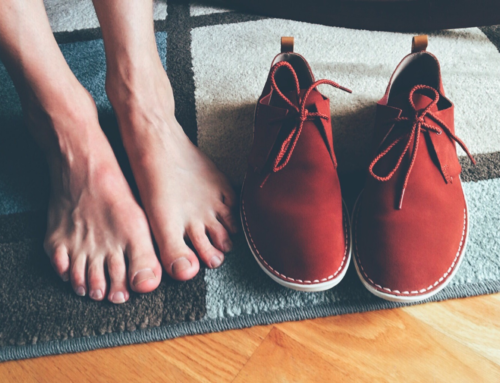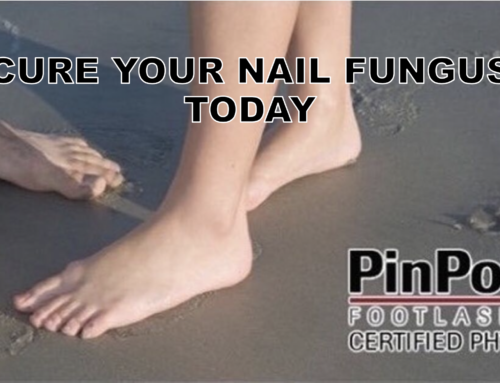When you get nail fungus, it comes with many symptoms, such as thickened, brittle nails that may turn yellow and possibly be painful. Another symptom that patients notice, much to their dismay, is that their toes begin to smell like cheese. So why is it that your toenails smell like cheese?
In truth, it is not the nail fungus that causes the smell of cheese. There is a type of bacteria called Brevibacterium that is responsible for the odor. Brevibacterium is used to mature certain types of cheese, which is what causes the commonly known funky smell. The same bacteria live on your feet and cause a cheese-like smell.
So you may now be wondering what this has to do with nail fungus, and why the smell and fungal infection so frequently occur together. This is simply because both fungus and Brevibacterium thrive in the same conditions, meaning dark, moist places like inside sweaty shoes.
What Causes Toenails to Smell Like Cheese?
Contrary to popular belief, it’s not actually the fungus itself that produces that cheesy smell. The culprit is a type of bacteria called Brevibacterium.
This bacterium naturally lives on human skin, especially in warm, moist areas like between your toes. It’s completely normal and harmless in small amounts. But when feet are enclosed in tight shoes or sweaty socks for long periods of time, the bacteria multiply rapidly — producing that distinct odor often compared to cheese.
Here’s the funny twist: Brevibacterium is also used in the cheese-making process, particularly in strong-smelling cheeses like Limburger and Munster. That’s why the smell coming from your toenails can be so reminiscent of these cheeses — it’s literally the same bacteria at work!
The Connection Between Toenail Fungus and Foot Odor
If Brevibacterium causes the smell, what does toenail fungus have to do with it? The answer lies in environmental conditions.
Both fungus and Brevibacterium thrive in dark, warm, moist environments — the exact conditions you’ll find inside sweaty shoes and socks. When your feet stay damp for extended periods, it becomes the perfect breeding ground for both microorganisms.
As fungus attacks the nail, breaking down keratin (the protein that forms your nails), it creates even more debris and dead skin for bacteria to feed on. This combination can intensify the odor and make it harder to manage.
If you notice both a foul odor and visible nail changes like discoloration, thickening, or crumbling, it’s likely you’re dealing with a fungal infection accompanied by bacterial overgrowth.
How to Get Rid of the Odor (and the Infection)
Getting rid of the smell means tackling both the bacterial and fungal problems. Here’s what you can do:
1. Practice Proper Foot Hygiene
-
Wash your feet daily with warm water and antibacterial soap.
-
Dry them thoroughly, especially between the toes.
-
Change socks at least once a day — more often if you sweat heavily.
-
Choose moisture-wicking socks and breathable shoes to keep your feet dry.
2. Use Antifungal and Antibacterial Products
Over-the-counter foot sprays and powders can help control moisture and bacteria. However, if toenail fungus has already set in, these topical solutions usually can’t reach the source of the infection beneath the nail.
3. Avoid Reinfection
-
Disinfect your nail clippers and pedicure tools regularly.
-
Alternate shoes to give each pair time to air out.
-
Use antifungal shoe sprays or UV sanitizers to kill lingering spores.
Why Laser Treatment Is the Most Effective Option
While hygiene and over-the-counter products can help manage odor, they won’t eliminate the underlying fungal infection. That’s where professional treatment comes in.
PinPointe Laser Treatment
If you have toenail fungus, it can be effectively treated with the FDA-approved PinPointe laser, which typically only requires one treatment session. The laser targets the fungus underneath the nail without damaging the surrounding skin or tissue.
Compared to oral medications or topical creams, laser therapy offers significant advantages:
-
No side effects — Unlike oral antifungals, which can cause liver toxicity and require regular blood tests.
-
Painless and safe — Most patients describe only a warm sensation during treatment.
-
No downtime — You can resume normal activities immediately after your session.
-
Highly effective — The laser reaches fungus beneath the nail bed, where creams can’t penetrate.
Our nail doctor in Pasadena, CA, recommends this treatment for toenail fungus. The PinPointe Laser treatment has the highest cure rate in the market.
When to See a Doctor
If your toenails are discolored, thick, or emitting a persistent odor, it’s time to see a professional. While it might feel embarrassing, nail fungus and foot odor are common and highly treatable. The sooner you begin treatment, the faster you can eliminate both the infection and the smell.
To schedule an appointment, call us at (800) 672-0625 or visit our website to find a licensed nail doctor near you. With over 150 locations nationwide, Laser Nail Therapy provides expert care and advanced technology to help you achieve fungus-free, odor-free, and healthier nails.




